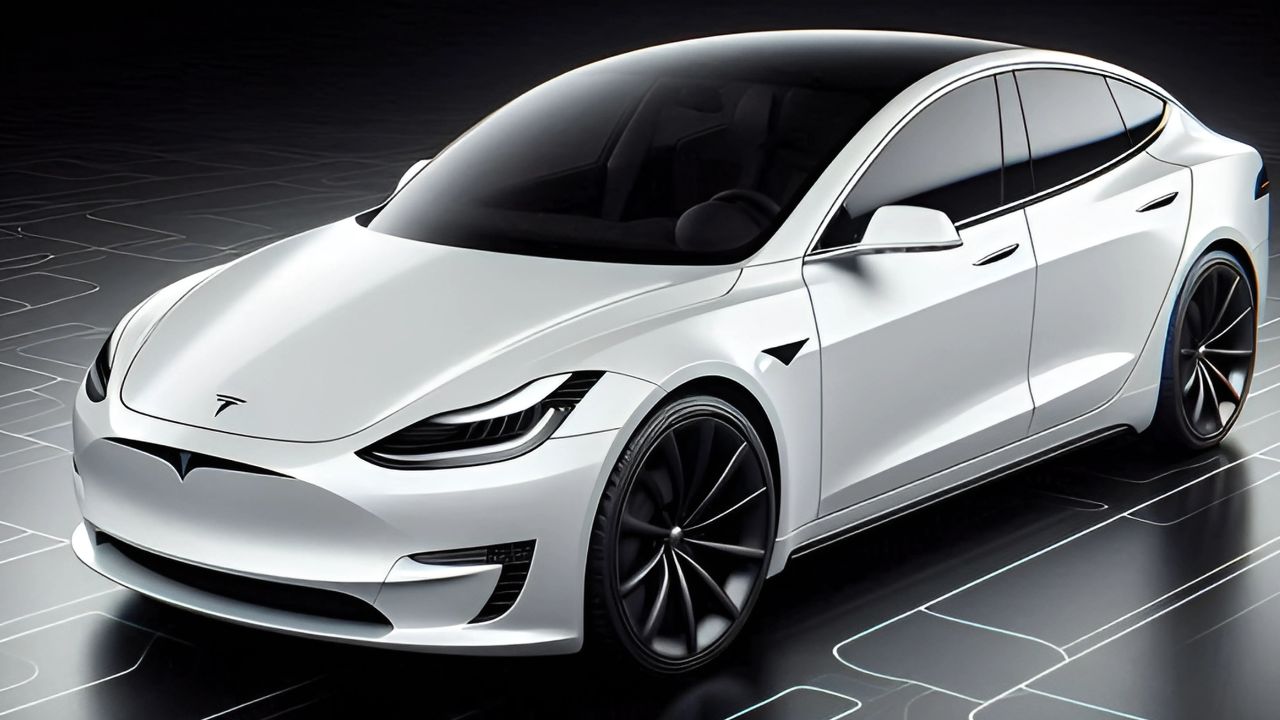Tesla just dropped some interesting news that’s got the electric vehicle world buzzing. The company is gearing up to launch a brand-new variant of their popular Model 3 in China, and it’s called the Model 3+. But here’s the thing – this isn’t your typical performance upgrade that you might expect from the “plus” name.
Instead, Tesla is playing a completely different game. They’re focusing on what Chinese consumers really want: incredible driving range without breaking the bank.
What Makes the Model 3+ Special?
So what exactly is Tesla bringing to the table with this new Model 3+? The magic lies in a clever combination that nobody saw coming. Tesla is taking the efficiency of a single rear motor and pairing it with a much more powerful battery pack.
The current entry-level Model 3 in China comes with a 62.5 kWh lithium-iron phosphate battery from CATL. It’s decent, but nothing spectacular. The Model 3+, however, steps things up significantly by using an NMC (Nickel Manganese Cobalt) battery from LG instead.
This isn’t just a small upgrade – it’s a complete game-changer for range-conscious drivers. The NMC technology is more energy-dense, which means you can pack more power into the same space. When you combine that with the efficiency of a single rear motor, you get something pretty remarkable.
The Range Game: How Far Can You Really Go?
Here’s where things get really exciting. Tesla expects the Model 3+ to deliver up to 497 miles of range on China’s CLTC test cycle. That’s absolutely massive for an electric vehicle, especially one that’s positioned as more affordable than Tesla’s premium offerings.
To put this in perspective, that range matches the longest-range version of the Xiaomi SU7, which is one of Tesla’s biggest competitors in China. But Tesla isn’t just matching the competition – they’re doing it with their proven technology and manufacturing expertise.
The current Long Range Model 3 in China already offers 468 miles of CLTC-rated range, but that version comes with all-wheel drive and costs significantly more. The Model 3+ gives you nearly the same range but with a simpler, more efficient single-motor setup.
Why China? Understanding Tesla’s Strategy
You might wonder why Tesla is launching this specific variant only in China. The answer lies in just how competitive the Chinese electric vehicle market has become. While Tesla still dominates in places like the United States, China is a completely different battlefield.
Chinese consumers have dozens of electric vehicle brands to choose from, and these companies are moving incredibly fast. They’re constantly introducing new models with cutting-edge features, impressive technology, and competitive pricing. For Tesla to stay relevant, they need to offer something that directly addresses what Chinese buyers want most.
Range anxiety is still a real concern for many electric vehicle buyers, especially in a country as large as China. By offering a Model 3 that can potentially drive for nearly 500 miles on a single charge, Tesla is directly addressing one of the biggest barriers to electric vehicle adoption.
The Technical Details That Matter
Let’s dig into what makes this possible from a technical standpoint. The Model 3+ will likely use the same 78.4 kWh battery pack that’s currently found in the Long Range all-wheel drive version. However, by removing the front motor and sticking with just rear-wheel drive, Tesla significantly improves the overall efficiency.
Interestingly, Tesla already offers a similar setup in the United States. The Long Range Rear-Wheel Drive Model 3 sold in America uses a slightly larger 79.7 kWh NMC pack. This suggests that Tesla has been testing and refining this configuration for a while.
The choice to use LG’s NMC battery technology instead of CATL’s LFP batteries is also significant. While LFP batteries are cheaper and have longer lifespans, NMC batteries offer better energy density. This means you can store more energy in the same amount of space, which is crucial for achieving those impressive range numbers.
What This Means for Competition
The introduction of the Model 3+ sends a clear message to Tesla’s competitors in China: the company isn’t backing down from the challenge. By offering a long-range, efficient vehicle at what’s likely to be a competitive price point, Tesla is directly targeting the sweet spot of the Chinese market.
This move also shows Tesla’s willingness to adapt their global strategy to local market needs. Instead of trying to force Chinese consumers to accept the same vehicle configurations available elsewhere, Tesla is creating something specifically designed for this market.
The timing couldn’t be better, either. As more Chinese cities expand their charging infrastructure and consumers become more comfortable with electric vehicles, having a car that can travel nearly 500 miles on a single charge removes almost all range-related concerns.
Looking Ahead: What to Expect
Tesla hasn’t announced an official launch date for the Model 3+ yet, but industry insiders expect it to hit the Chinese market within the next few months. The company has already filed for the necessary sales licenses, which suggests they’re moving quickly to bring this vehicle to market.
Pricing will be crucial to the Model 3+’s success. Tesla needs to position it competitively against local rivals while still maintaining their profit margins. Given that it uses more expensive NMC battery technology, it will likely cost more than the basic Model 3, but probably less than the current Long Range all-wheel drive version.
The success of the Model 3+ in China could also influence Tesla’s strategy in other markets. If Chinese consumers respond positively to this long-range, rear-wheel drive configuration, we might see similar variants introduced in Europe or other regions where range is a primary concern.
Tesla’s decision to create the Model 3+ specifically for China shows just how seriously they’re taking the competition in this crucial market. By combining proven technology in a new way, they’re offering something that directly addresses consumer needs while leveraging their manufacturing and engineering strengths.
